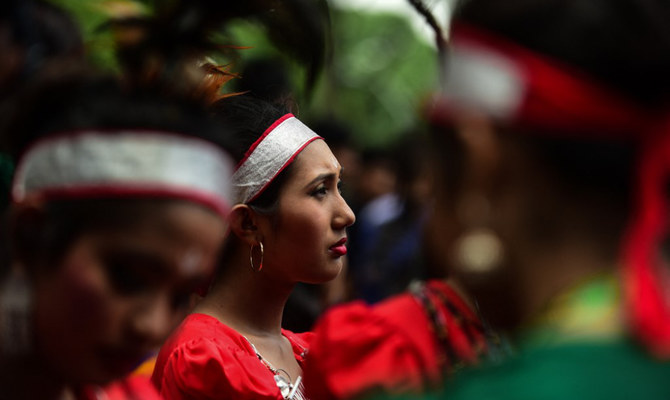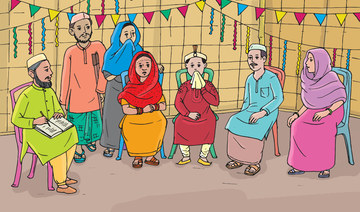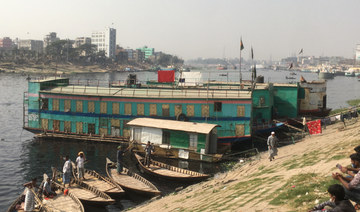DHAKA: Bangladesh has been scrambling to save its endangered languages with new school books for indigenous communities, but the groups say too few of them are included in the program as authorities struggle to find appropriate teachers.
Most people in Bengali-majority Bangladesh, which has a population of more than 167 million, speak Bangla, the official language, as their first tongue. But there are also 39 ethnic Indigenous groups in the country, with an estimated population of 4 million, who have distinct cultures and languages.
According to a 2019 survey by the International Mother Language Institute, 14 of these Indigenous languages are about to disappear.
The government in 2017 launched textbooks for five of the biggest groups — Chakma, Marma, Tripura, Garo and Sadri — to teach students in the first three classes of primary school in the mother tongues. The initiative was welcomed by indigenous communities, but they fear it is too little to stop their languages from dying.
“The government has to date only launched textbooks for five ethnic groups. What will happen to the other languages?” rights activist Sanjeev Drang, who also serves as secretary-general of the Bangladesh Indigenous People’s Forum, told Arab News earlier this week.
“If immediate initiatives are not taken by the authorities, many of the other languages will also disappear from the country.”
Authorities say they have been struggling to find teachers who both speak and write in indigenous languages as, in most of these communities, users are no longer familiar with their writing systems. To introduce textbooks in five of them, the National Curriculum and Textbook Board had sought the help of linguists to restore their respective alphabets.
“We are facing a challenge in providing lessons through these ethnic mother languages because we don’t have enough trained teachers. Some of the teachers from the ethnic groups can only speak in their languages, but they don’t know how to write in them, which is a challenge we have to overcome,” Prof. Dr. A. K. M. Riajul Hasan from the curriculum board’s primary education section told Arab News.
He said the board has been trying to identify the shortcomings in the introduction of the first five languages, but the process has been stalled by the pandemic and school closures.
“Once we complete this research, the initiative will be gradually expanded for other ethnic languages also,” he said.
The country’s Department of Primary Education is planning to train more instructors for Indigenous schools, but its training director, Uttam Kumar Das, said it may only start next year, together with a planned rehaul of the country’s curriculum scheduled for the school year 2023.
Representatives of the groups whose children have already started classes in their mother tongues say it makes a great difference.
Rony Chakma, a resident of Rangamati, a predominantly Chakma town in the Chittagong Hill Tracts in southeastern Bangladesh, said the use of his native language has been decreasing as people do not use it in their professional lives. With official tuition, children could internalize it better.
“It’s always nice if our children learn the letters of our own languages,” he said.
For Nelson Marma from Bandarban, a predominantly Marma community, learning his language at school had been “like a dream,” which he is glad is now coming true for the younger generation.
“The use of mother languages has been decreasing day by day,” he said. “With this initiative, our languages will be now saved from extinction.”
But the initiative needs to be expanded as soon as possible to save other indigenous tongues.
“Many people from these ethnic groups are about to forget their mother languages,” Dr. Sourav Sikdar, a renowned linguistics professor at the University of Dhaka, told Arab News. “We need to take immediate steps to preserve the other languages also.”
He said the five-language school programs already introduced were crafted in a way that not only introduced to Indigenous children their writing systems but also embedded them in their native cultural contexts, with illustrations specifically designed for them.
“The students receive a ‘cultural translation’ through which they come to know their traditions and cultures in their own languages,” Sikdar said. “We just need to strengthen the focus and replicate the initiative for other languages also.”













